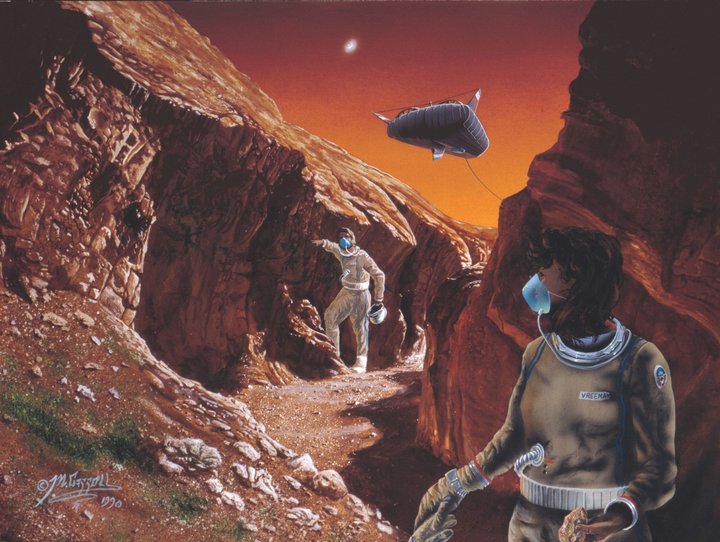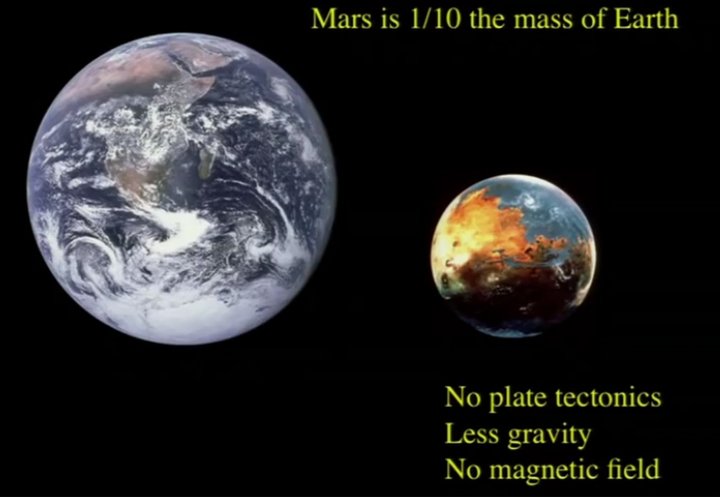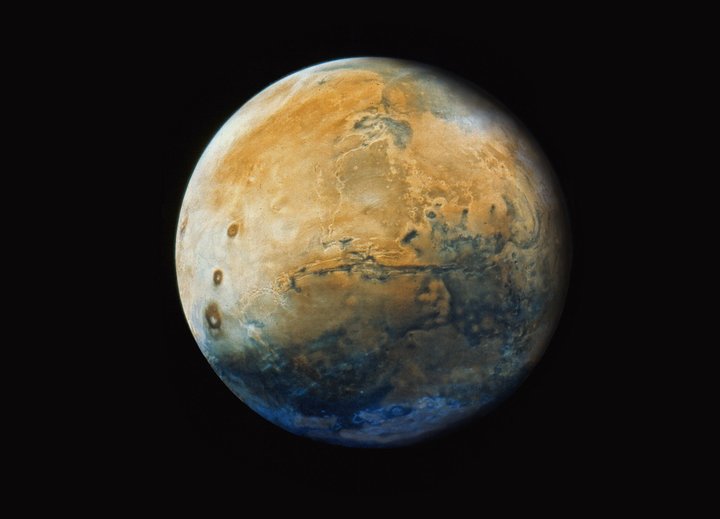I’ve written, here and elsewhere, at some length about the technical challenges involved in terraforming Mars: transforming our neighbor planet from a cold, dry and nearly airless planet to —
- (“Terraforming-lite”) – warm, moist (oceans!) with a thick carbon dioxide atmosphere. This would return Mars to its previous state, some four billion years ago, when Mars and Earth were sister planets, sort of. The technology would probably involve nuclear or solar powered plants injecting massive amounts of perflourite “greenhouse gases” into the atmosphere, taking on the order of 1,000 years.
- (Full terraforming) – as above, but with a breathable oxygen-rich (>13% O2, <1% CO2) atmosphere. For this, the obvious technology — the one that worked naturally on Earth starting a couple of billion years ago — is photosynthesis, what plants do: converting CO2 to O2. Time frame? 100,000 years. Less if we figure out how to bioengineer leaves to be super-efficient photosynthesizers.

Early Martian colonizers would use “rebreathers.” Once the climate had warmed sufficiently to bring up the atmospheric pressure, explorers would be able to venture outside without pressurized spacesuits. Rebreathers capture exhaled oxygen, to be subsequently inhaled. (Michael Carroll, used with permission)
In all my discussions, I’ve focused on the “How?”, rarely venturing into “Why?” When pressed, I’ll usually mumble something about our “obligation” to bring life to a dead planet — and possibly beyond. If our galaxy turns out to be devoid of life, one might see the greening of the Milky Way as a kind of “duty.” (Writing that, I’m not totally convinced!) I guess I’d be fine with giving Mars the gift of trees and fish and grass and earthworms. But humans? Isn’t one screwed-up planet enough for us?

Earth and Mars compared. Mars shown with oceans, as it was billions of years ago, and could be again if we terraformed the planet to where the atmosphere was thick enough to permit liquid water. (NASA)
On the other hand, the usual rationale for terraforming Mars is all about colonization — that’s what Elon Musk says, and he’s as likely in the near future to get the ball rolling in that direction. And why colonize? Insurance! If we self-destruct by nuclear war, or a pandemic gets us, or if an asteroid on the scale of the one that finished off dinosaurs some 65 million years ago does us all in — we have an ace up our sleeves: a colony (or several) of humans on Mars, surviving the cataclysm back here.
Great, our species will survive. Except — in a lovely, poetic irony — it won’t be our species anymore. In a few generations, those bold one-way colonists will have begun to differentiate themselves from their stay-at-home cousins. Thanks to 38% of Earth gravity, lack of microorganisms (assuming Mars really is a dead planet) and extreme radiation (no magnetosphere, and before any appreciable atmosphere develops), Mars colonists will start to genetically diverge from standard human stock:
- Bones will get stronger as a result of the low gravity;
- Colonists would probably lose their immune systems, with no microorganisms to spread diseases around the population. (Contact, especially sexual contact, with humans from Earth would probably be fatal after a few generations, in the same way native people in the Americas were vulnerable to European diseases.)
- They bodies are likely to develop resistance to radiation-caused mutations; tougher bodies will survive and multiply, while weaker ones will succumb early to cancer and not reproduce. Their skin will probably darken.
- Once there’s some oxygen in the Martian atmosphere, they would adapt, the same way human bodies took about 200 generations to adapt to the reduced oxygen — 65% of that at sea level — of the Tibetan Plateau (with elevated lung capacity, faster breathing, high nitrous oxide in the blood). Of course, once colonists figured out bioengineering, the process would go much faster.
The larger point is that in a few generations, depending on how efficient their gene editing skills are, they won’t be colonists anymore: they’ll be Martians. Eventually, even if they wanted to, they wouldn’t be able to conceive a viable hybrid Earthling-Martian baby. And instead of insuring the survival of our species, we’d have created a new species which might think of Earthlings the way we now think of Homo erectus: an ancient and rather inferior bunch of has-beens.

Mars now: dry, cold, with a thin CO2 atmosphere, and lifeless (probably). (Michael Carroll, used with permission)
CLICK TO MANAGE